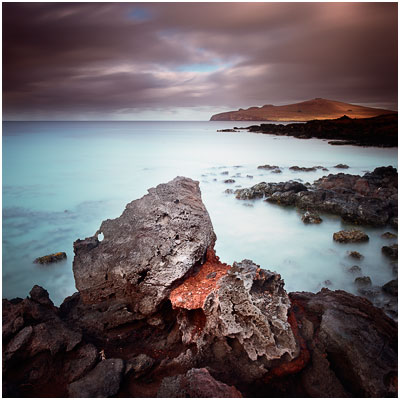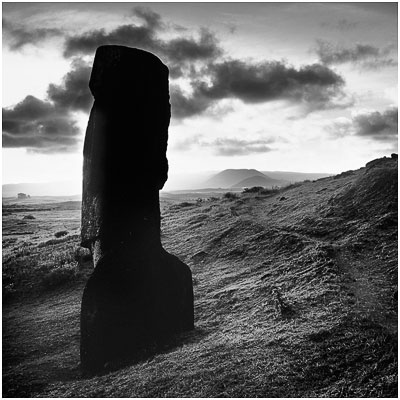We are always striving for balance in our photography. We look for it when we are working with tones, when we are composing and also, in how much time we spend on our craft. I know only too well that sometimes spending too much time on what I do can create an imbalance.
As photographers we are drawn to our passion because deep down we are seeking to find a balance between light and shade. Light and share are our Yin and Yang.
Ataranga Hanga Piko Riata, Easter Island
Image © Bruce Percy 2016
The process of seeking balance is important even though I believe the goal of reaching it is not. It is important because it is the mechanism that allows us to create new work. Without this 'seeking' we would become static and nothing would be produced by us. It is also an impossible thing to achieve because life is fluid and when things are always in a state of change, balance is difficult to keep.
Instead, I see 'seeking balance' as a journey that allows me to explore and create work along the way. It is in moving and changing between states where our creativity flourishes.
Volcanic fault line, Tongariki, Easter Island
Image © Bruce Percy 2016
So I think it's healthy to find there is an ebb and flow in one's work. I have moments when I produce very little and then times when I am very creative.
In considering how seeking balance affects my work, I'm aware that recently I've been moving towards a more monochromatic, less saturated look. But sometimes the work does not suit it and I return once more back to more vivid colours. One could argue that this is me seeking balance in the colour aspects of my work.
I've also become aware that sometimes my images are heading towards brighter tonal ranges and then back towards darker tonal ranges. One could also argue that this is me seeking balance in the tonal aspects of my work.
I've come to realise that this moving and shifting is as if I'm flexing some tonal muscle, getting used to a new range of tones that I've not worked with before.
Image © Bruce Percy 2016
I believe that we are always hunting, searching, looking for balance in what we do. Yet seeking balance is not about attaining it, It is really more about the movement from one state to another and how new work comes into being through the changes in us.
Just as Yin cannot exist without Yang, and darkness cannot exist without light, creativity cannot happen without a need to seek balance. Once we understand that the act of seeking balance in our work is really a journey, and not a struggle to overcome our limitations, then we become free as creative people to see where it may lead us.

















